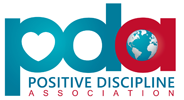Positive Discipline in High School“I just completed my first year teaching in the U.S. and find my classes very different from what I’m used to. The traditional, stern approaches don’t work here. Is there a Positive Discipline resource suitable for high school students and a curriculum with shorter time frames?” — Melanie, High School Teacher Dear Melanie, here’s guidance for applying Positive Discipline effectively with high school students: High school settings require flexibility in structure:
High school students in the U.S. often expect a more democratic classroom culture:
| The Positive Discipline Association recieves a 5% donation for all purchases made at www.positivediscipline.com |
